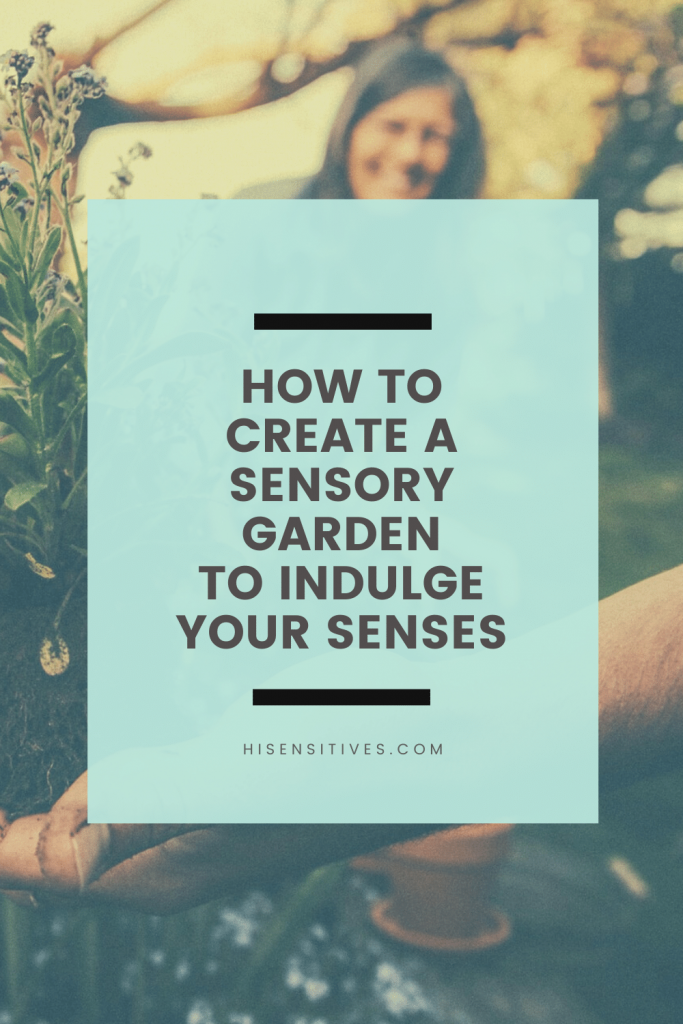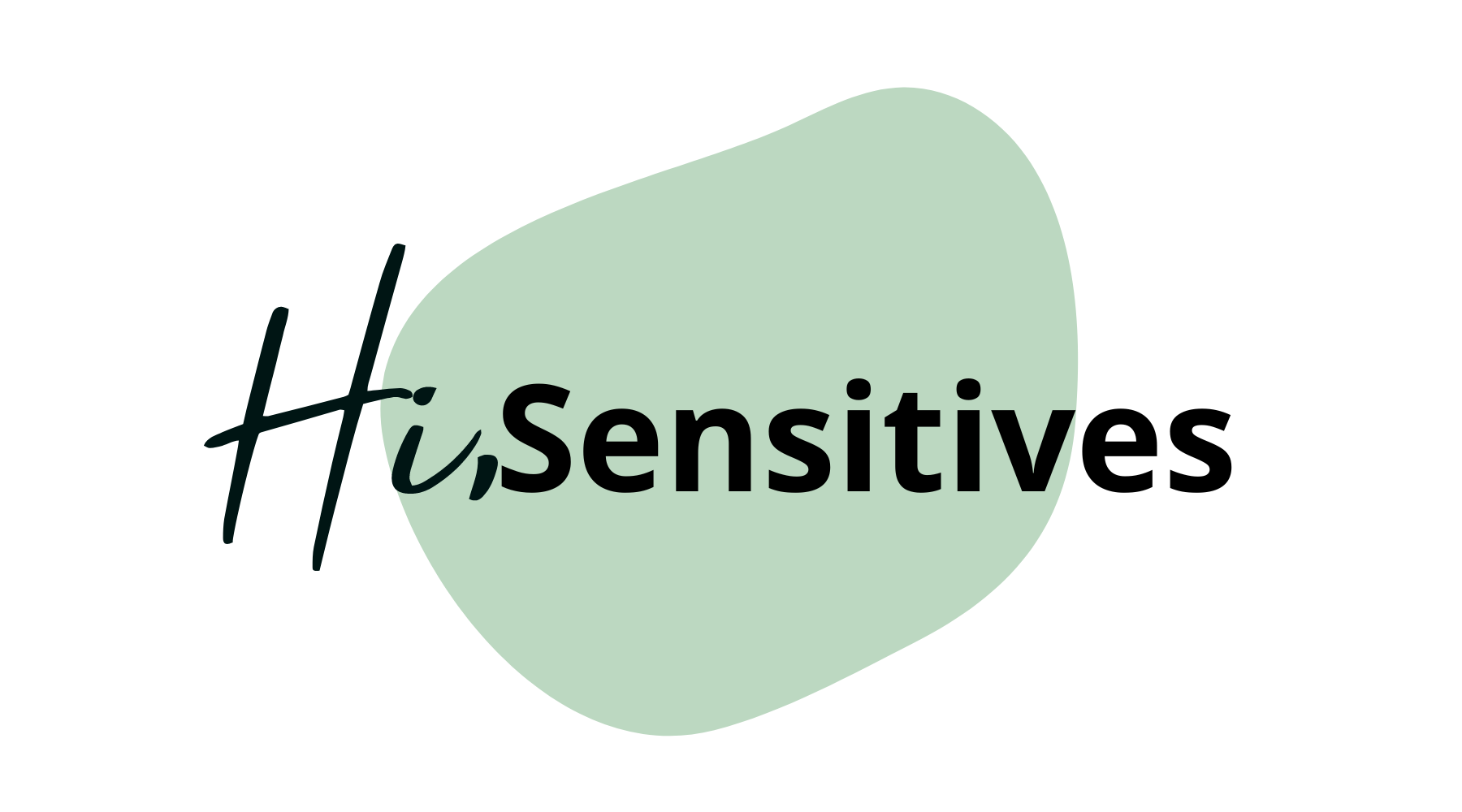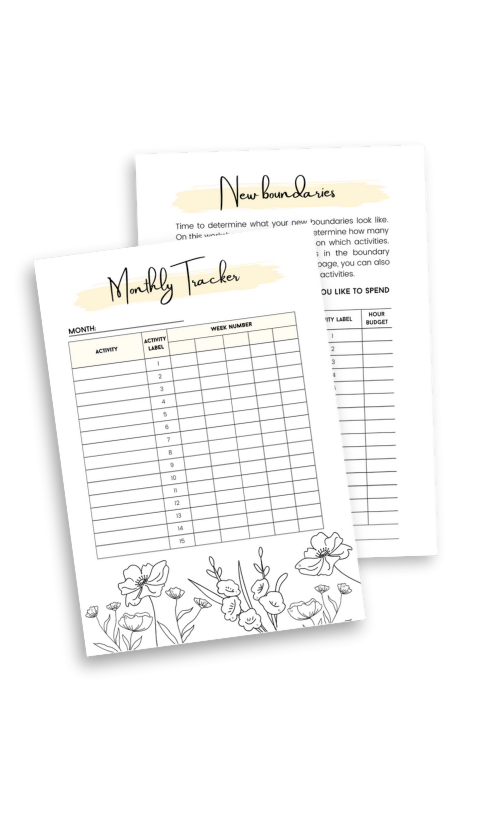Do you want to create a sensory garden that triggers your senses in all imaginable positive ways? Try these practical & easy applicable tips!
Estimated reading time: 10 minutes
As a highly sensitive person you naturally feel drawn to the outdoors. Getting into nature has scientifically proven to benefit sensitive people.
A lot of people think they have to get out of their own environment to do so: they might go to a nearby forest of take a trip to the seaside, but I want to tell you that that isn’t particularly necessary.
You could use your own backyard just fine! But there are ways to get the most out of that garden, so you can really stimulate your senses and create a sensory garden. Or you could use the space to really calm down and relax yourself.
In this blog I want to show you how to create that little piece of sensory heaven, right at your doorstep.
Here’s What You’ll Learn:
The Eight Senses Relevant To Create A Sensory Garden
Information from the outside world (stimuli) enter through our senses. The senses are organs that pick up these stimuli and convert them into electrical energy signals that are sent to the brain through our nerves.
A couple of examples of stimuli are the awful smell of your husband’s aftershave, the red chili peppers in the curry you are eating or sunrays that shine through your window right onto your computer screen. When these signals enter our consciousness, a perception arises.
The “classic” senses, as once described by Aristotle, are the five senses with which we can make conscious perceptions. These senses are seeing (visual), hearing (auditory), smelling (olfactory), tasting (gustatory) and touching (tactile).
But there are also important senses that people are often less aware of. That is why many scientists now prefer to use a different, somewhat broader classification. They distinguish between eight senses, which also are relevant when it comes to creating your sensory garden:
- Visual: The ability to perceive and interpret light and color stimuli.
- Auditory: The ability to perceive and interpret sound.
- Olfactory: The ability to smell and interpret odors.
- Gustatory: The feeling that perceives and interprets the properties of food and other substances in the mouth.
- Tactile: The tactile system through which touch, pressure, pain and temperature are perceived and interpreted.
- Vestibular: The vestibular system in the inner ear that senses and interprets the position and movements of the head and allows one to orientate oneself in space and time.
- Proprioception: The system that perceives and interprets the state of the muscles in the body.
- Interoception: Feeling what is happening inside your body.
What Happens In The Brain When You Spend Time In Your Sensory Garden?
Every sense is unique. Yet they share basic features and similarities in structure and function. They all use the same neural plan where the sense organs receive stimuli (such as light, sound or pressure) into electrical impulses that are carried to the brain via bundles of nerve fibers.
The Thamalus
Sensory data from spending time in your sensory garden generally goes to the thalamus. The thalamus is a switching station that sits on top of the brainstem, and from there they are directed to their own special area in the cortex.
From this primary cortex, the stimuli can reach large and diverse areas of the brain. For example, a scent can be intense evoke emotions because there are direct connections with the limbic system.
In order for people to survive in their environment, the senses must be highly responsive – to signals as weak as a single photon of light or a molecule of a dust flake in the air – and at the same time selective enough to filter information so that not everything gets immediate attention.
Stimulating A Receptor Cell
Stimulation of a receptor cell (e.g. light on the retina or sound on the eardrum) usually releases a protein that starts a biochemical reaction of messenger and energy-carrying molecules that generate electrical charges in a neuron, causing it to fire.
Sensations themselves are very fleeting: they sometimes remain in the memory for a few seconds, sometimes even shorter. The process by which our brains process and understand this incoming data is called perception. Memory, emotion and cognition are mixed to create an experience.
Perception works in a special way. Certain areas of the brain do not only respond to sensory information, but they also actively condition it. For example, they inhibit irrelevant input and supplement other input. This ensures that you can still follow a conversation at a noisy party, for instance. This is because these brain regions replenish fragments. In this case, words are made from partial sounds.
The Senses And Highly Sensitive People
When you are a highly sensitive person, your brain works differently. Highly sensitive people lack some sort of filter in their brain, which causes them to have to deal with a lot of stimuli.
That’s because that filter inhibits irrelevant input. For example, when you are in a meeting and several people are speaking at the same time, it becomes difficult to focus on the conversation you are having yourself.
It gets almost impossible to focus and you might feel really overwhelmed because of it. Because not only is the input from your conversation partner coming in, the input from the other people as well.
And it’s not only the speaking too. You also might notice the different kinds of perfume people are wearing, you might hear the traffic outside and maybe the fluorescent lighting is making a buzzing sound as well.
Deep Processing
In addition, these stimuli are also processed more deeply than in people who are not highly sensitive. This deep stimulus processing means that highly sensitive people can quickly become overstimulated.
You can recognize an overstimulation in yourself when you notice that you start to feel a need to withdraw yourself. Perhaps, you might feel yourself getting anxious, frustrated or even angry. Also, you feel exhausted.
Moreover, you might feel your muscles cramping up. It is key to listen to your body in situations like this. If you don’t listen, you could experience extreme fatigue or become burned out.
Need For Sensory Pleasure
But not only do stimuli cause negative symptoms. Sometimes highly sensitive people might actually feel a need for certain stimuli.
Highly sensitive people can have a really intense reaction to negative stimuli, but on the other hand they could really love other perceptions.
For instance, they might want to leave a restaurant because it reeks of fish, but absolutely love a flower shop. Certain movements could help you calm down, like sitting in a rocking chair, or you sleep very well with the scent of lavender on your pillow.
If this is the case, it’s key to embrace that. Because in this busy world, you need every help to unwind that you can get.
Incorporating The Senses Into Your Sensory Garden
Enough theory for now. It’s time to talk about creating the sensory garden and how to optimize it in such a way that it helps you unwind and chill out. Or – if you are sensory seeking – how to give you optimal sensory input. They can even go hand-in-hand: sometimes adding extra sensory input gives you joy, which can feel really relaxing!
Visual
There are multiple ways to incorporate sight in your garden. Pick some colorful plants, for instance. Plants also come in a vast array of shapes and sizes and you could also consider plants with a bold leaf color.
Next to that, you could play with water pieces, like fountains, bird baths or a pond. If the sun shines on it, the (moving) water will sparkle, which can be pleasing on the eyes. If you are sensitive to that, you could choose to put it in a more shadowy side of the garden.
Auditory
You could tickle your auditory system in different ways as well. I already mentioned water – fountains or a small waterfall – and these could also give you great auditory pleasure. You can lay in your yard and hear the water splashing and rippling.
I’m sure it will calm you down. Or it might just make you have to pee. If you are sensitive to that, ignore this paragraph. Some people might also like the sound of wind chimes. I myself prefer the bamboo ones, since they aren’t as high pitched as some others are.
Olfactory
A sensory garden is the perfect place to indulge yourself with scents. Especially in summertime! Pick some scented, blooming plants for your garden like jasmine, roses, wisteria, lilies or buddleja. And not only do they smell amazing, they will also attract butterflies and honeybees, which is great for the planet.
And planting herbs will also do a lot for your olfactory system. Lavender is a popular one, but herbs like rosemary, thyme and lemon balm will give your nose a treat. And if you’re sitting outside in the evening, a nice scented candle could really accompany the different fragrances. If you burn a lemon scented candle, it will keep mosquitos away from you too!
Gustatory
It’s also not that difficult to add something for you to taste! I mentioned herbs in the previous paragraph. These are also great for the gustatory system. But not only herbs could be added to give you some tasty stimuli, you could also go for a kitchen garden. Pick a spot to plant some vegetables and grow fruit! It could be very pleasing to walk into your sensory garden and eat some fresh strawberries or tomatoes.
If this isn’t really your thing (because it does mean you have to maintain it), edible flowers might be more your cup of tea. Citrus blossom, clover, daisies, dandelions, honeysuckle, lavender, pansies and violets are a couple of them. Pick them and eat them, or add them in your salad!

Tactile
One of my favorite senses is touch. I’m very sensitive to it, but absolutely love certain feels. My feet are delicate, but I love to walk on grass bare feet. If you are like me, you could add some grass to your garden.
Moreover, if you are more sensory seeking in this department, you might want to opt for some pavement which has some textured patterns in it (like cobblestone, for instance). If you walk on it with your shoes of, it serves as a great reflexology exercise.
However, if this is too big of a step for you, you could go for textured plants which feel great to your fingertips. And again, adding water to your garden is also a great way to pleasure your tactile system.
Vestibular, Proprioceptive And Interoceptive
To please these senses, you can add movement into your sensory garden. Adding a rocking chair or a swing to your garden furniture is a good idea if you love relaxing with the feeling of being swayed. A trampoline could also give a nice feeling if you are sensory seeking.
Another way of incorporating these senses into your garden is to add a place to lay down your yoga mat. If you have space for it, it might be a really nice feeling to do your exercises in your sensory garden.
When You Don’t Have A Garden
This article is written for highly sensitive people who have a garden. But I can imagine that you don’t have access to one, but still want to make the most of, for example, your balcony.
Most of the items I mentioned are also available for balconies. Deliciously tasting herbs and aromatic plants can be planted in pots, a bird bath doesn’t have to be big and maybe you even have space for a rocking chair on your balcony.
If you don’t have a balcony either, you could incorporate some of these tips inside your home. If that’s not an option, you can try to find if outside of your home.
Maybe there is a park nearby, or maybe you can dip your feet into the soil of a forest that’s close to your home. Another way is to visit a “barefoot path”. These paths or trails are specifically made for sensory means.
If you go to such path, be ready to throw those shoes off and walk across a trail which has all kinds of different textures. These often include pebbles, bark, soil and even mud. Don’t worry about dirty feet, you can wash them at the end of the path.






